This was an article I wrote for Goomba Stomp, but due to the request of the developers I refrained from publishing. I’ve added it to my portfolio as I think it still shows off my aptitude for writing, research, and game design.
Casey Yano’s first reaction to learning about the new Hearthstone expansion is a resounding “What?”. Not a simple inqusitive “What?”, as if he had misheard. No, this was a more profound “What?”. The kind of “What?” where the world grinds to a halt. This was a “What?” that you let out when you think a multi-billion dollar company like Blizzard has poached your idea.
Getting Into Indie
Earlier this month, Seattle-based MegaCrit Games released their first game, Slay the Spire. The two lead devs, Anthony Giovanetti and Casey Yano, have known and worked with each other for several years on a number of different projects. The two have gone from being classmates to friends to co-founders. In speaking with them both, it’s become abundantly clear that Slay the Spire is a unique product of their distinct personalities, preferences, and ideas.
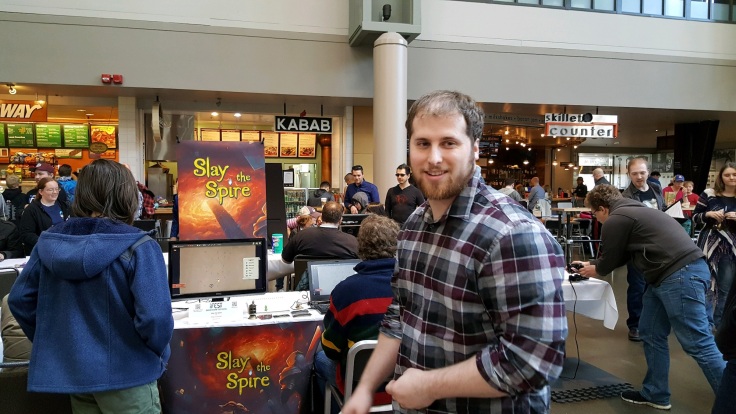
The two make for something of an odd pair. Casey craves action. Two of his favorite games are Super Smash Bros. Melee and PUBG. They’re simple, to the point, and get you right into the fun. Anthony, on the other hand, has a longstanding affinity for complex systems and mechanics in games. From running a massive Netrunner fansite to working at a board games shop, strategy and tactics have been a large part of his gaming life. Despite their differences, the two have a mutual admiration and respect for game design that shines in their own work.
“a game that reflects the best of its creators.”
The desire to create has been a strong motivator behind MegaCrit Games and its founders. After releasing a couple of mobiles games that met with lukewarm reception, Anthony and Casey got what they would call “real jobs”. But that drive to create never really went away. Several years after they had moved on from game dev, they felt its draw once again. They quit their jobs and chased that feeling.
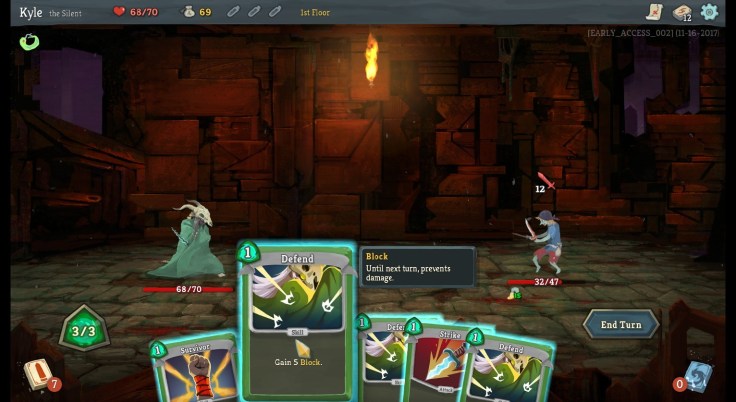
Slay the Spire is the culmination of that dream, two years in the making. In many ways, it’s a game that pulls from both of its creators. It’s easy to learn, yet hard to master. The UI is clean and intuitive but manages to convey a slew of information and concepts. What initially started out as a rough proof of concept on a design document has since evolved into a game that reflects the best of its creators.
Having racked up nearly 60 hours in Slay the Spire over the past two weeks, it’s safe to say I heavily enjoy the game. As a fan of deckbuilders and roguelikes, it scratches both of those itches in an extremely satisfying way. Slay the Spire takes the player on a journey through dozens of floors of peril. By ascending each level, you fight monsters, overcome deadly traps, and obtain powerful cards and relics. The deckbuilding aspect of the game provides a deep level of strategy by forcing you to think about your card choices, while the roguelike part makes each run unique and interesting.
Blizzard’s Involvement and Perceived Plagiarism
Like other creative fields, the game development world can be surprisingly small. Over the course of Slay the Spire’s development, Casey and Anthony called upon friends and mutual contacts to playtest their game. It was through these channels that they met Mike, Peter, and Tim, three members of Hearthstone‘s design team. For MegaCrit games, this was huge.
Casey recalls being starstruck when they first found out the Hearthstone devs were interested in their game. Like so many other people, they’d grown up playing Blizzard games. They were more than happy to not only meet these devs, but to get their feedback as well. As Casey puts it, “It was harmless for us to invite Blizzard, they make huge social online games!” The first Hearthstone dev joined in February, with the others coming on-board soon after.
Given that Slay the Spire is wholly a single-player experience, there wasn’t much thought regarding AAA developers having access to their work in progress. Mike, Peter, and Tim had access to every working build and would occasionally pop into the playtesting Slack to provide feedback. Most of this commentary amounted to expressing their enjoyment of the game, with the occasional critique. Casey and Anthony took this as a very good sign. After all, if Blizzard designers enjoyed their game then they’d most likely made something good.
“we thought it was a game made to destroy us.”
Then the Kobolds & Catacombs announcement dropped.
Hearthstone‘s upcoming expansion, revealed at Blizzcon in early November, features 135 new cards added to the game. With last year’s addition of the “Standard” and “Wild” formats of play, each new expansion brings a hefty amount of change to the competitive scene. Standard format restricts players to only using expansions from the last two calendar years. This was intended to create a competitive environment that dynamically shifted as time went on, meaning that each new expansion makes a fairly large impact on how people play the game.
In addition to buying booster packs, cards from Kobolds & Catacombs can be obtained from the free single-player game mode, Dungeon Run. The objective in Dungeon Run is to fight monsters, add cards to your deck, and progress to unique randomized bosses. For MegaCrit Games, this was a little too close to home for comfort.
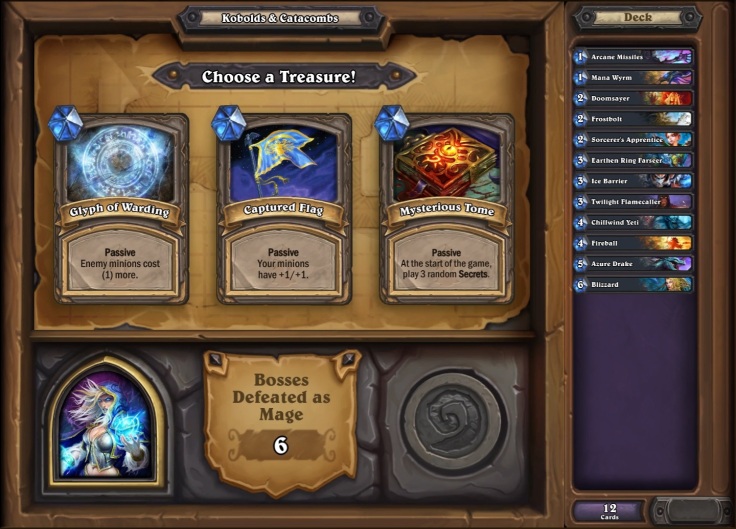
Casey describes his initial gut reaction as one of personal offense. He remembers viewing Kobolds & Catacombs as a “game made to destroy us.” “These numbers, composition, and the general flow seem similar to our game. Why would they do this to us?” he told me, “Just the rudest thing to release a free game that is made to make us look like garbage. They didn’t even want to tell us.”
He wasn’t the only person to react that way. Many of the Slay the Spire playtesters also accused Blizzard of preying upon an indie developer. Despite the initial backlash from the devs and playtesters, it simply took time and perspective for things to settle down.
Casey and Anthony quickly realized that Dungeon Run was more of a mini-game meant to service the online, competitive aspect of Hearthstone. The main feature of Kobolds & Catacombs would be the 135 new cards added to the competitive scene; Dungeon Run merely would supplement the expansion by giving players a fun way to earn cards. The two indie devs now rest a little easier. “They’re very different games and targeting different audiences,” Casey informed me, “Slay the Spire is a challenging self-growth game while Hearthstone is social and competitve.”
1 + 1 = New
The full story behind Slay the Spire‘s development is one of circular inspiration. In 2014, Peter Whalen, one of the Hearthstone dev playtesters, released a deckbuilding roguelike game for iOS called Dream Quest. Anthony cites it as one of the primary influences behind Slay the Spire. “Peter’s game, Dream Quest, certainly is similar to our game,” he admits, “I had played it previously and enjoyed it: the fundamental concept of battling enemies with a deck and as you continue on you get stronger in both by adding cards to your deck.”
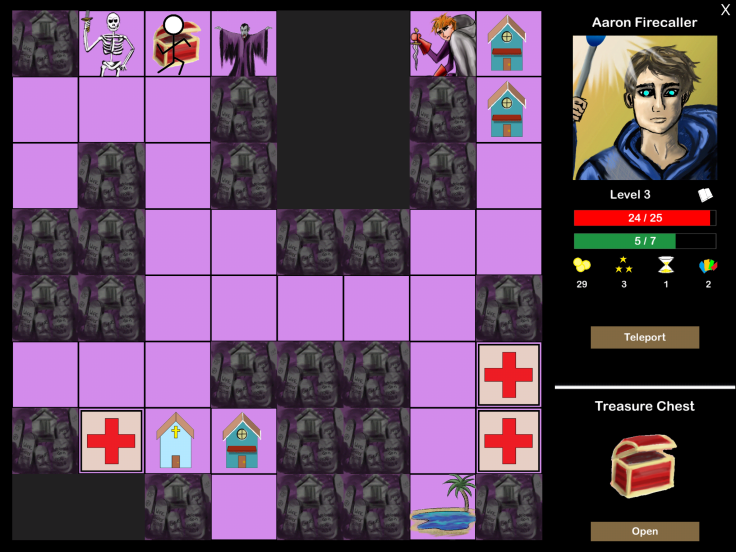
Slay the Spire’s inspirations don’t end there. As I described in my review of the game, it draws many systems and mechanics from other games: Hearthstone, FTL, The Binding of Isaac, and Dominion, to name a few. Casey and Anthony picked and pulled from many of these games to craft their own.
The most ironic bit of inspiration, not lost on either of them, was how much they’d taken from Hearthstone‘s UX (user experience). “The interface for digital card games is generally very terrible,” Casey explained, “but Hearthstone is very beautiful. It’s very easy to understand. There’s a lot of extremely subtle things that they do to make the game easier to play.”
Once the dust had settled and tempers had cooled, MegaCrit gradually began to look at Kobolds & Catacombs in a more positive light. As Casey puts it:
“We know that Mike has played our game 26 hours or so. That’s a crazy amount of time! We know they’ve played a ton of our game, and that’s like a huge vote of confidence for us. Why would a principal game designer on the world’s most popular digital card game be spending 26 hours of his life on our game? Just knowing that we were like ‘Are we gonna be successful?’ We don’t know that yet, but we really hope that people like Mike play our game.”
That begs the question then, at what point does a game stop being a copycat and start belonging to a genre? There’s no real benchmark to determine similarity. Games, like any other creative medium, are subjective and personal experiences. What’s fun to one person may not necessarily be fun for another.
A good example to consider is the origins of the JRPG genre. Dragon Quest originally released as a response to Western RPGs of the time, many of which were inaccessible to a wider audience. With Dragon Quest’s success in Japan, Square gave the green light for Hironobu Sakaguchi to commence work on his own RPG, Final Fantasy. From that point on, the JRPG genre would continue to grow and expand, covering a vast array of mechanics and ideas.
According to Casey and Anthony, there are only a handful of true deckbuilding roguelikes. With the advent of Slay the Spire, and other games like Dream Quest and Monster Slayers, there are now quite a few games based around this core “deckbuilding roguelike” concept. Each title is unique in how it approaches that idea: similar, but different. It’s that mindset that Casey and Anthony now view Kobolds & Catacombs: similar to Slay the Spire, but a different experience.
Inspiring Innovation
All this considered, what exactly constitutes inspiration as opposed to plagiarism? Does a game pioneering a genre mean it should have exclusivity rights to those mechanics? A recent case of inspiration treading dangerously close to plagiarism is the Fortnite vs. PUBG debacle.
In March of this year, PlayerUnknown’s Battlegrounds released to overwhelming success. In the eight months since its release, PUBG still boasts an average 16 million playerbase. Seeing that success, it’s not unreasonable to assume that there would be other developers who wanted to follow up with their own game. Epic Games did just that with the release of Fortnite‘s battle royale game mode. In spite of the controversy between the two games, Fortnite hit its 20 million player count earlier this month.
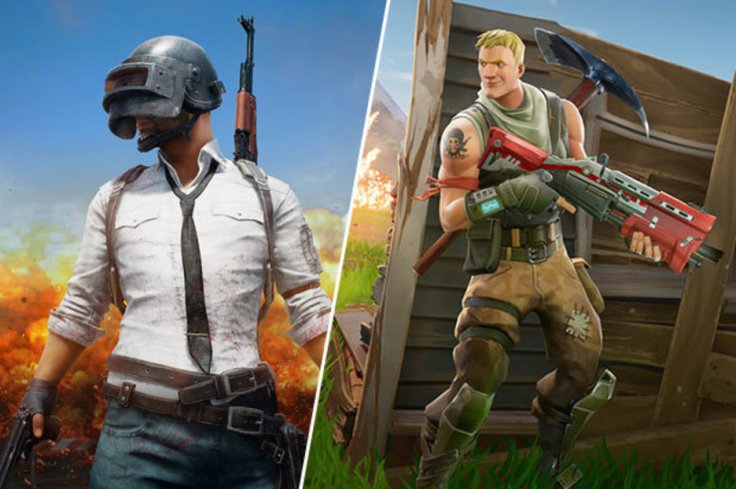
Having played a decent amount of both, I’d argue that the two games cater to different audiences. PUBG is a tactically paced affair, with a large inventory and item system, bullet drop, and slower, strategic gunplay. Fortnite, on the other hand, is quick and arcadey. You can’t really bide your time and sneak around in Fortnite, whereas that kind of strategy in PUBG can reliably carry you into the endgame. Beyond the immediate similarities (shrinking zone, UI choices, a starting island), the games offer fundamentally different gameplay experiences.
“In the end, a game is so many inspirations and things put together”
The same dichotomy of plagiarism vs. inspiration appears in many other games. Medal of Honor and Call of Duty, Super Smash Bros. and Brawlhalla, TF2 and Overwatch are just some of the examples where games can draw clear design links to each other. Does that mean they’re plagiarizing each other? It’s a hard question for which there’s no definitive answer. The important thing to consider is whether or not those similarities and differences result in a meaningful and unique experience.
Looking Back and Moving Forward
Kobolds & Catacombs wears its heart on its sleeve. With tropes like crushing walls and oozing slimes, it’s a tongue-in-cheek homage to the Western fantasies and RPGs of an older generation:
Everyone in the Hearthstone development team was indeed very interested in dungeons and fantasies when they were young. Personally, it was hard for me to make friends and overcome the language barrier when I left South Korea to learn English for the first time since I was in a foreign country. Then, I started to learn English and make a lot of friends when I started to play dungeon RPGs. That is why I love dungeon role-playing fantasies where you get to explore dungeons. All our team members had something similar like this when we got to talk about it. When we made Hearthstone 4 years ago, we hoped that other players would love and enjoy playing card games like this since that is what we love, too. That is why we chose this concept for the new expansion so that our players can feel like they are role-playing in dungeon fantasies as they play Hearthstone. (Yong Woo, Inven Global – Interview with Hearthstone Devs)
Ultimately, the single player component of Kobolds & Catacombs is in service of the online aspect of Hearthstone by offering players new cards to use competitively. The “deckbuilding roguelike” portion of the expansion is far from a hostile attack on Slay the Spire.
“In the end, a game is so many inspirations and things put together,” Casey reasoned, and it’s no less true for Kobolds & Catacombs than it is for Slay the Spire.